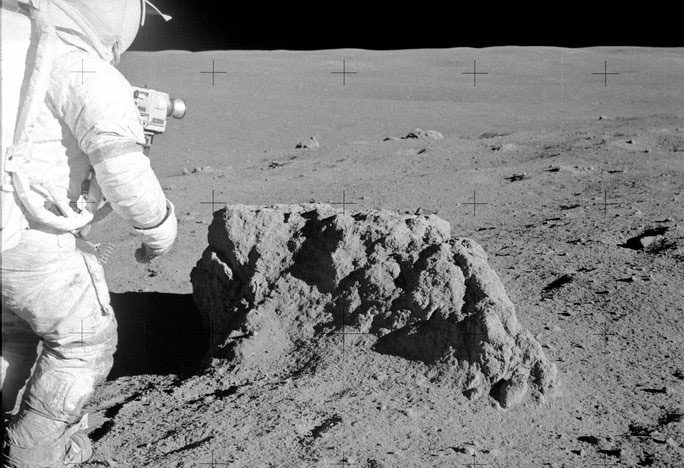A new study reveals a bold proposal from the Moon to create an artificial shield that helps reduce sunlight, a plan that many scientists worldwide are pursuing in hopes of curbing global warming.
This solution falls under the category of solar geoengineering, which involves creating a reflective barrier to reduce sunlight hitting the Earth, thereby limiting heat absorption. Recently, this approach has been discussed by scientists globally as a potential solution that requires further research, particularly in the context of mitigating climate change through reduced emissions.
The fundamental principle of this technique is to create artificial “clouds” or a form of barrier that reflects some of the sunlight reaching the Earth, which in turn means limiting the amount of heat absorbed.

Lunar dust is a viable option to create a thermal shield for Earth – (Photo: NASA).
In the recent study, the authors indicate that such a shadow could require up to 10 billion kilograms of dust material each year, approximately 100 times the total mass of everything humanity has launched into space to date.
Therefore, instead of the costly and challenging task of sending a large quantity of material into space, scientists suggest using another launch pad beyond Earth’s atmosphere: bringing lunar dust back to Earth.
According to astrophysicist Scott Kenyon from the Harvard-Smithsonian Center for Astrophysics, a co-author of the study, they explored various types of particles, including soot, aerogel, sea salt, and lunar dust for their research.
They also launched a test particle containing lunar dust from the northern pole of the celestial body into an orbit near the Lagrangian Point 1 (L1), a theoretical point that possesses gravitational stability between the Sun and Earth, approximately 1.5 kilometers above the planet’s surface.
This particle, launched at a speed of 2.8 kilometers per second, floated for a total of 5 days before being dispersed.
This approach, while still requiring significant energy, is much more cost-effective than launching anything from Earth, as the Moon’s gravitational pull is only 1/6 that of Earth.
A properly calculated lunar dust shield could help block about 1.8% of the sunlight reaching Earth, which is within the necessary range to slow down our rising temperatures.
According to the authors, this new study is just a preliminary assessment of the potential impacts and indicates a feasible approach, but many more research steps are needed before we can truly reach this future technology.


















































